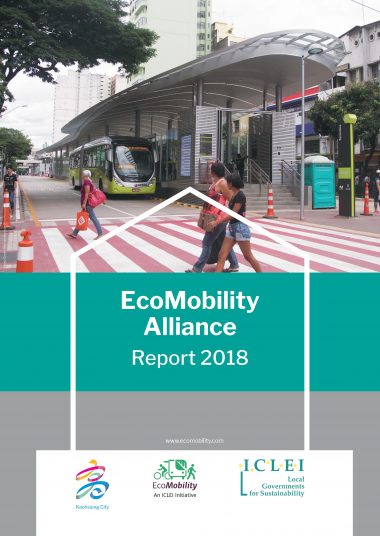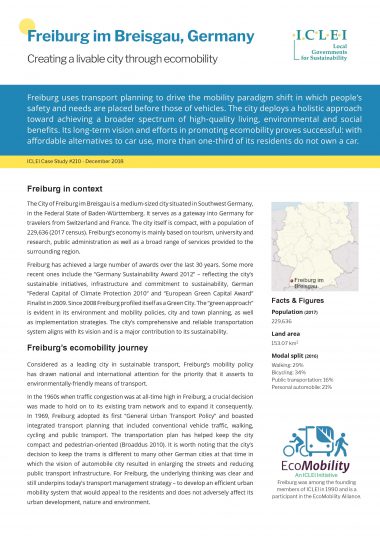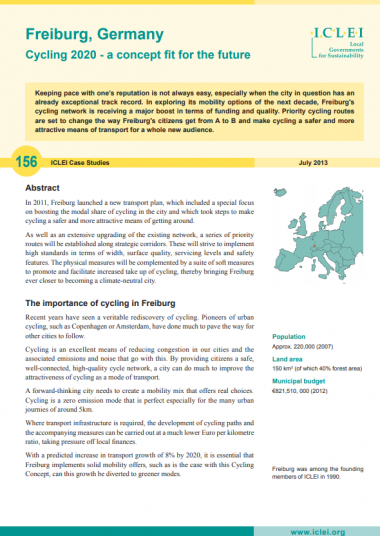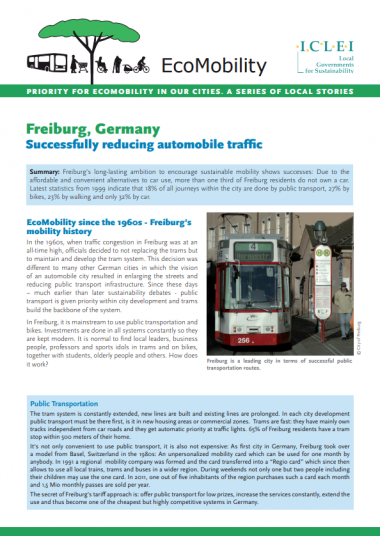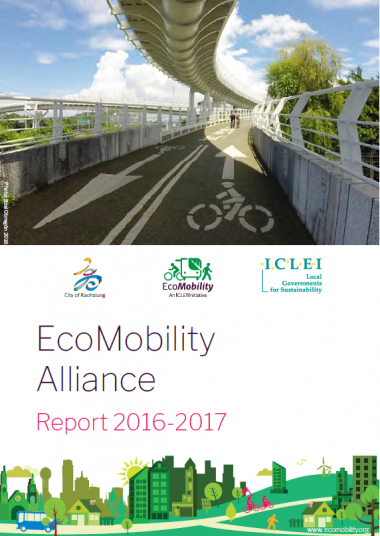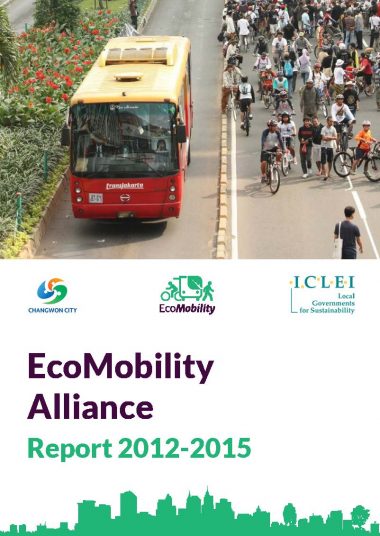The Green capital of Germany did not start off so pleasant. After the second world war, its development trajectory focused on cars and geographic expansion. When traffic congestion became a pressing issue in the 1960s, the city administration reversed its development policy to public transport- oriented. Contrary to other German cities, Freiburg made a critical decision to maintain and expand the existing tram network, as reflected in the General Urban Transport Policy 1969. The essence of this definitive policy is an integrated approach to transport and land use planning. This policy influenced the urban planning approach and prescribed that new developments must be concentrated along public transport corridors.
Building on the success of the 1969 Policy, Freiburg renewed the strategic urban mobility plan, known as the Transport Development Plan 2008 – 2020 (Verkehrsentwicklungsplan 2008 – 2020), with a stronger vision and better coordination with the Land Use Plan 2020. The VEP 2020, crafted by main local and regional stakeholders and residents emphasizes walking, cycling and public transport with an aim to level off or reduce the number of car trips despite increasing mobility. The neighborhood of Vauban was built to be a sustainable model district adopting TOD design principles. Not only are houses built to a low-energy consumption standard, transport in the area is primarily made on foot or on bike due to the layout of the district.
This policy change in the city of Freiburg that lasted over three decades conceived successful results: 60 percent of Freiburg residents do not own a car, boasting the lowest automobile density in Germany. Car trips fell from 32 percent to 21 percent of the modal split in a span of seven years (1999 – 2016). Between 1982 and 2016, the share of bicycle trips doubled from 15 percent to 34 percent and public transport trips rose from 11 percent to 16 percent. Freiburg’s success in the integration of land-use and transport has made the city both compact and ecomobile.
